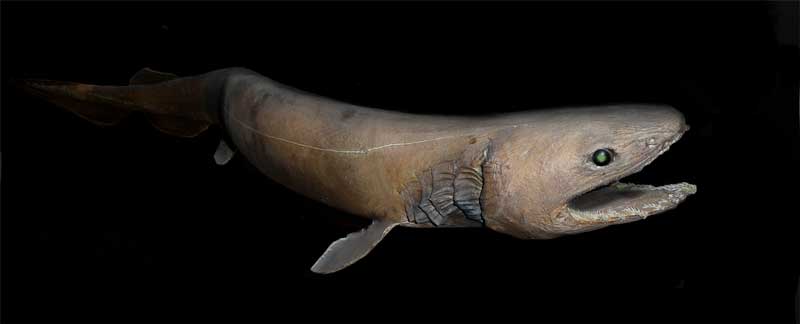|
The other day, Trish and I were exploring an interesting property located a mile down the road from us, called Kumberland Gap. In the 1970s, the owner carefully moved about twenty old structures to this property by dismantling them at their original locations and reconstructing them here, creating an authentic "frontier town." Decades ago, they regularly opened the "town" as a tourist attraction. Recently, it was purchased by new owners, who intend to restore the place to its old glory. Anyway, we were exploring the main structures (jail, grain mill, blacksmith's shop, general store, and many more), when we saw a trail back into the woods. We followed the trail and found this old homestead-type cabin. This got me to thinking... what must it have been like to live in a place like this, deep in the woods, long before we had internet, cell phones, and other modern conveniences? And... this may surprise you, but one of the main reasons I admire those brave, resilient people is that they did not have modern insect repellant. Think about it. We have chiggers here that can ruin your whole week if you make the mistake of going into the woods for only one hour without proper protection. To the north (like in Minnesota), the mosquitoes, black flies, and deer flies will make your life miserable without insect repellent. I know, I know... those people had to use an outhouse, they canned their own food, and they worked their fingers to the bone with countless other tasks. But I am most in awe of the fact that they did all of this without Off or Repel! I gotta respect them for that. Photo Credit: Kumberland Gap cabin - Stan C. Smith
0 Comments
Did you know the wild turkeys of North America almost went extinct in the 1930s? Mainly due to overhunting and loss of their forest habitat. Actually, their decline began back in the 1600s, when European colonists began aggressively hunting them and clearing forest to make farmland.
Today, domestic turkeys are often part of a traditional Thanksgiving meal, but by 1863, when President Abraham Lincoln declared Thanksgiving an official U.S. holiday, wild turkeys were completely gone from Connecticut, Vermont, New York and Massachusetts. By the 1930s, they were nearly extinct everywhere. Thanks to intensive state and federal efforts over the last 90 years, there are now 6 to 7 million wild turkeys in North and Central America. Let's consider a few more wild turkey tidbits. The bird's name actually comes from the name of the country, Turkey. Here's the story: In the Middle Ages, a bird called the African guinea fowl was brought to Europe, first becoming established on farms in Turkey. Eventually, the African guinea found its way to farms all over Europe, and people called it the Turkey bird. When Europeans first ventured to North America, they thought wild turkeys resembled the African guineas (Turkey birds) from back home, so they called them turkeys. Domestic turkeys (as opposed to wild turkeys) did not originate in the United States. They have a rather interesting history. The Mayans of southern Mexico were the first to domesticate turkeys, about 2,000 years ago. Early Spanish explorers took some of these domesticated turkeys back home with them, and before long, domestic turkeys became common on farms throughout Europe. Then, when Europeans began migrating to the eastern United Sates, they brought domestic turkeys with them, completing a "turkey circle" back to North America. So, domestic turkeys are not descendants of the wild turkey subspecies that live in the U.S. Instead, they came, via Europe, from a subspecies of southern Mexico. Confusing, huh? We’ve all experienced it. We gaze up at the stars at night, and it gives us a strange feeling. Suddenly, we have questions we don’t normally think of. Even people who don’t normally give a hoot about science suddenly understand why scientists are so drawn to the mysteries of the universe.
It’s not only the stars that have this effect. A view of any breathtaking scene can do the trick. The dramatic play of light on ominous clouds following a thunderstorm. A vast landscape of mountains, or prairie, or forest. The Grand Canyon. A coral reef, teeming with brightly-colored fish and invertebrates. The list could go on. Personally, I get the same feeling when I look at tiny things through a microscope, seeing a hidden world on the surface of an insect’s head, for example. The point is, looking at certain things gives us a sense of awe. Why? And what is awe anyway? “Awe is the feeling of being in the presence of something vast that transcends your understanding of the world.” This is a quote from Greater Good Magazine, and I think it sums it up nicely. However, different people experience awe in different ways. Awe does not have to come just from looking at the stars. I feel awe when I watch a music performer I have admired all my life. I feel awe when I watch a spectacular movie, such as Avatar. I feel awe when I read a book that is so well written that I cannot put it down. I’m beginning to realize it is important to seek out new ways to experience awe. We should learn to feel awe as we watch the maple leaves turn orange in the fall. We should feel awe when we see a child laugh or smile just like their parents, or when we see someone give money to a homeless person. We should feel awe every time we find a crinoid fossil on a lake shore, or see a T. Rex skeleton in a museum. We should learn to feel awe as often as a four-year old child does. Awe has evolutionary roots. Historically, awe would bring people together, bound by fascination, to achieve the same objectives. Unfortunately, awe is becoming endangered as people spend more time indoors and working mind-numbing jobs. Awe can be found indoors, but it is much easier to find outdoors. Not only that, but if people forget how to feel awe at the natural world, we will have lost what it means to be human. Remember to look up at the stars. The rodents are preparing for winter. Example: Trish bought a brand new car a few months ago. A few days ago, she lifted the hood to see if rodents were causing damage (a common problem here), and she discovered some little rascal was making an impressive nest on top of the engine. And chewing on wires.
The squirrels are busy burying acorns and walnuts. And here is an eastern chipmunk that was stuffing corn into its cheek pouches in our yard. Eastern chipmunks, the only chipmunk species in Missouri, are fairly common in our area. The genus name for these chipmunks is Tamias, a Greek word meaning "a storer." Chipmunks enthusiastically gather nuts and seeds, stuff them into their cheek pouches, and carry them to their nests to build up a supply for lean times. When I say they do it enthusiastically, I mean it—a single chipmunk will usually create a cache of about a half bushel (about 4 US gallons) of seeds and nuts. Okay, let's do some math. Eastern Chipmunks weigh about 3.5 ounces on average. A half bushel of corn weighs 26 pounds, so I'm going to estimate that a half bushel of various nuts weighs somewhat less, let's say 20 pounds, or 320 ounces. So, a 3.5-ounce chipmunk regularly gathers and hides 92 times its own weight in seeds. Now let's imagine I'm a chipmunk, at my normal weight of 185 pounds. I would have to scour the forest floor for seeds, stuffing my cheeks full, and carrying the seeds to my nest, over and over again until I have 17,020 pounds of seeds. Respect to the chipmunks of the world. Did you know the frilled shark has hardly changed (as a species) in 80 million years? Therefore, it is called a "living fossil."
This primitive shark, which is extremely rare, lives in deep water, usually 50–200 meters (160–660 ft) below the surface, and much deeper during warmer months of the year. They are long and eel-like, with characteristics of some of the most ancient fossilized sharks. They grow to about 6 feet (2 m) long and live about 25 years. Because they are rarely seen alive, little is known about their behavior. They get the name frilled from the numerous tips of their gills that stick out beyond the edges of their gill covers. Frilled sharks have about 300 teeth, arranged in clusters and pointing backward to help prevent their prey from escaping. They eat fish, squid, octopus, cuttlefish, and sea slugs (nudibranchs). Squid make up about 60% of their diet. This information is based on stomach contents and structural features observed in dead frilled sharks, because live frilled sharks have rarely been observed in the wild, and they are extremely difficult to keep alive in captivity. No one knows how many frilled sharks remain, but because they are sometimes accidentally caught in fishing nets (resulting in their death), and because they reproduce very slowly, they have been classified as "near-threat of extinction." It's true, right? At holiday gatherings, family reunions, or just about any other gathering of the people we are fond of, we eat more than we normally do. I used to think this was just me, because I often perceive that everyone else around me is eating far less than I am. Getting together with others seems to trigger something in my mind, and I lose control, like a shark in a feeding frenzy, going after buckets and buckets of chum. However, a bit of research reveals that I am not alone in my temporary, get-together, food-snarfing insanity.
My first thought, when examining this mystery, was what I’ll call the “litter of piglets” scenario (I am not calling my family a litter of piglets… it’s just an analogy). Perhaps you’ve seen a litter of piglets struggling for access to the sow’s teats, when there are often fewer teats than there are piglets. With limited food, the piglets have to get as much as they can. Maybe that’s why I eat more when I’m around other people? Well, this hypothesis doesn't hold up, because I do not have a tendency to shove everyone out of the way to get to the taco bar first. So, forget the “litter of piglets” scenario. What, then, causes this phenomenon? Decades of research reveals that the vast majority of people do indeed eat more when in the company of others. In fact, psychologists have called this the “single most important and all-pervasive influence on eating yet identified.” Wow, harsh—especially when I'm the poster child for this behavior. Surprisingly, some researchers have ruled out hunger, mood, or distracting social interactions as important factors. Instead, they put the blame squarely on the length of the meals. When people are together, they simply eat for a longer period of time. They enjoy talking and laughing together, and they sit around the table (or stand around the food) for much longer than they normally would. Extra minutes at the table = extra food stuffed into the mouth. Studies show that bigger groups enjoy longer meals, and when the meal times are limited, they eat no more, on average, than when they are alone. In other words, we eat the same amount of food per minute, whether we are alone or in a group, but groups eat longer. It’s simple math, dude. |
Stan's Cogitations
Everyone needs a creative outlet. That's why I write. Archives
July 2024
|







 RSS Feed
RSS Feed